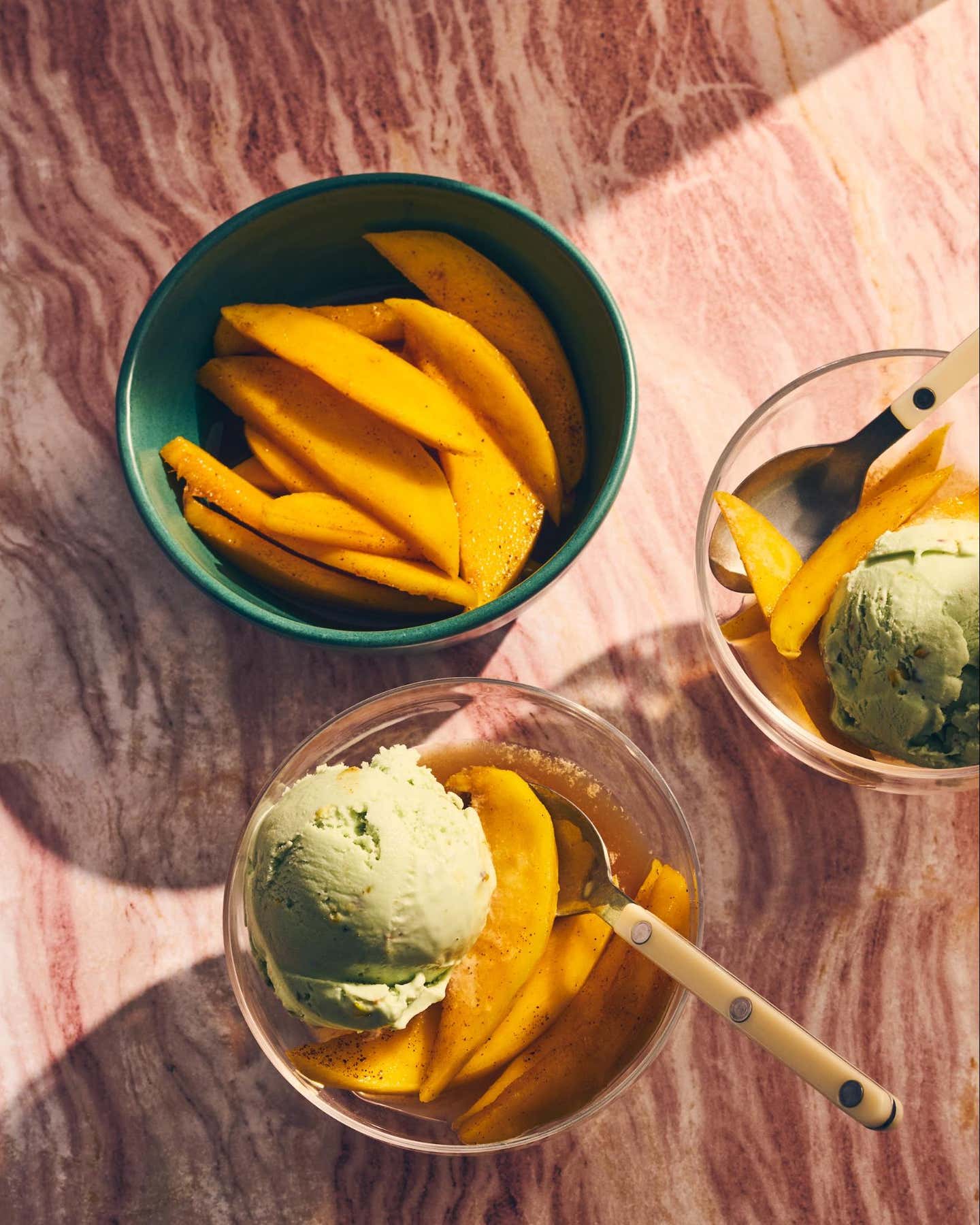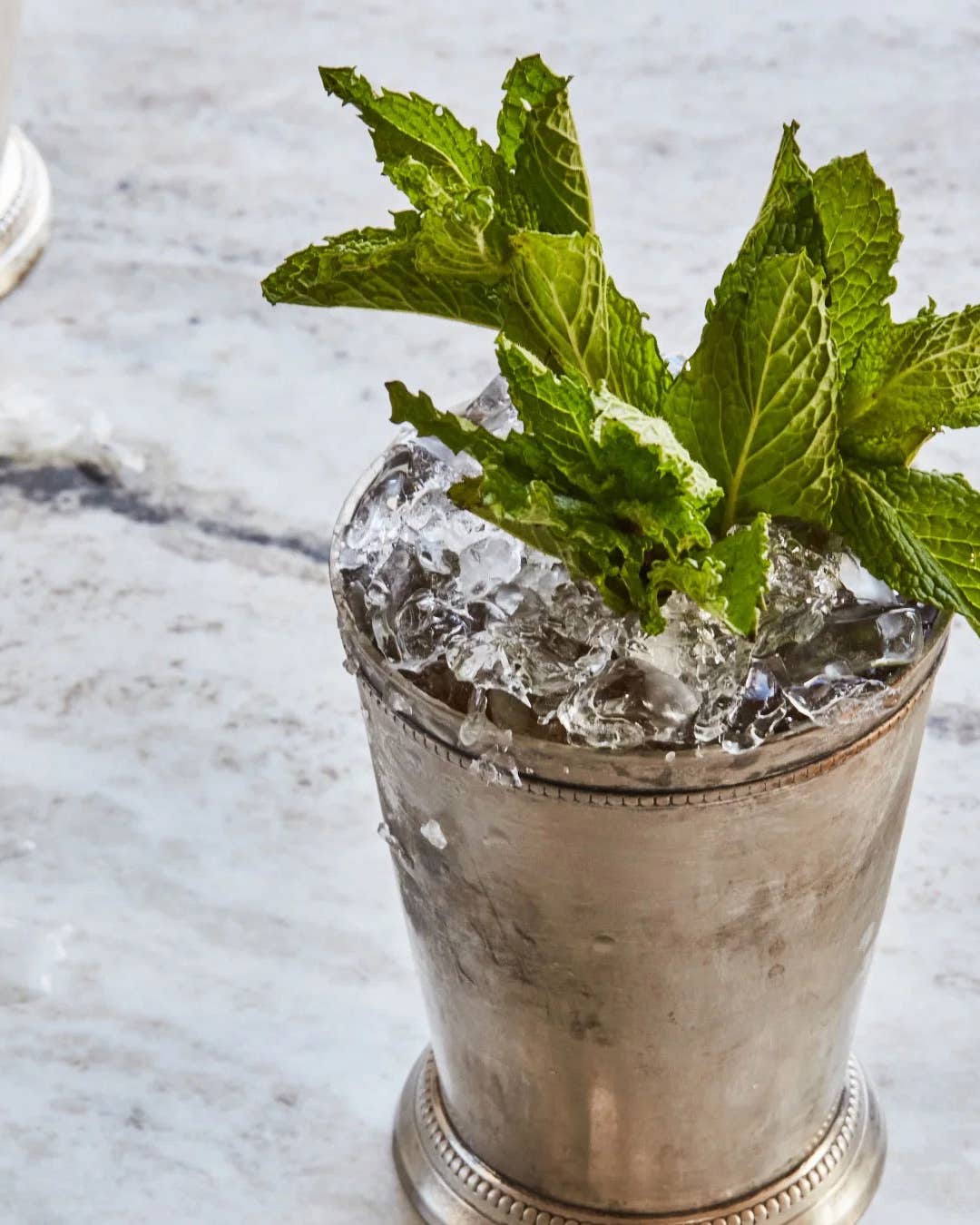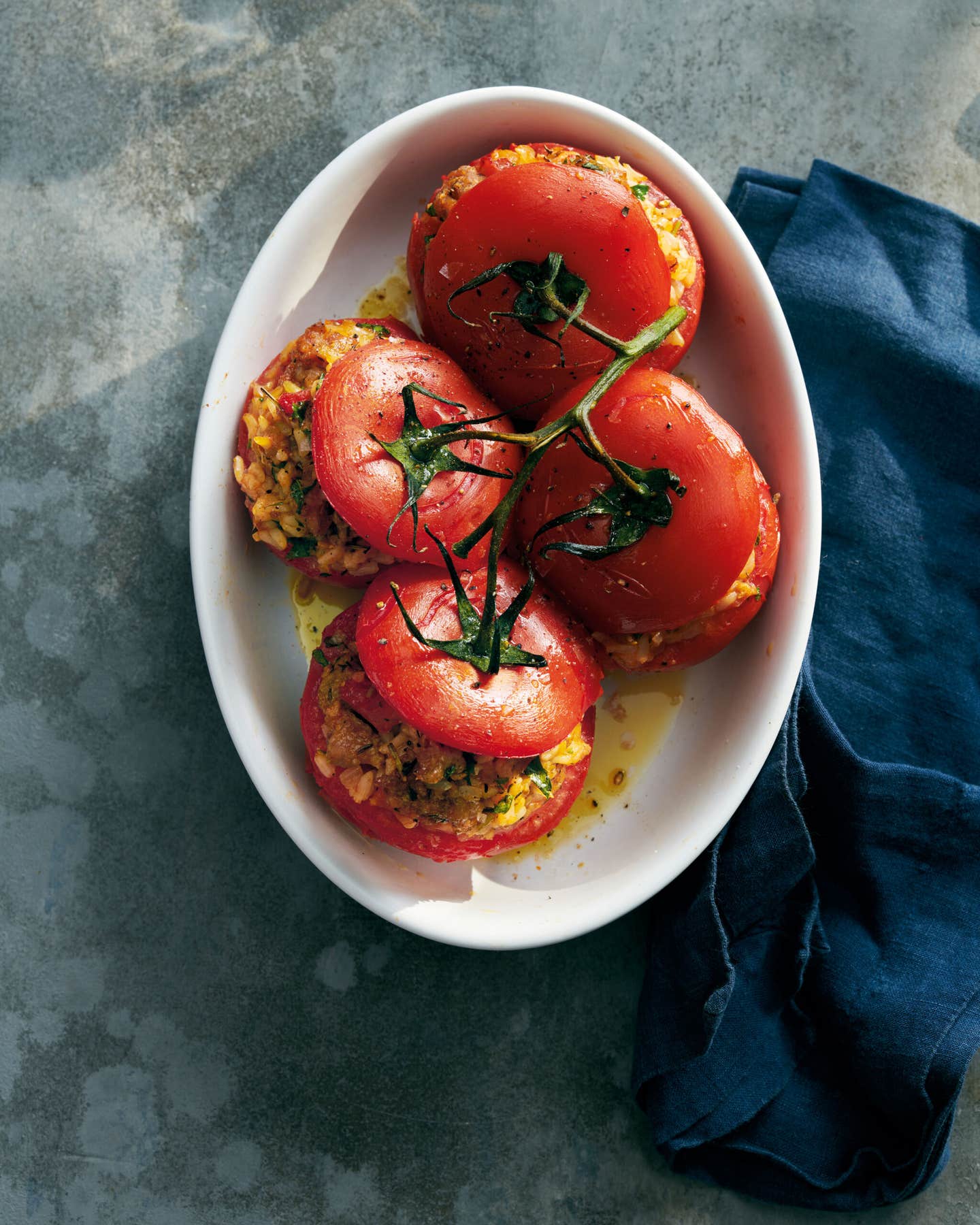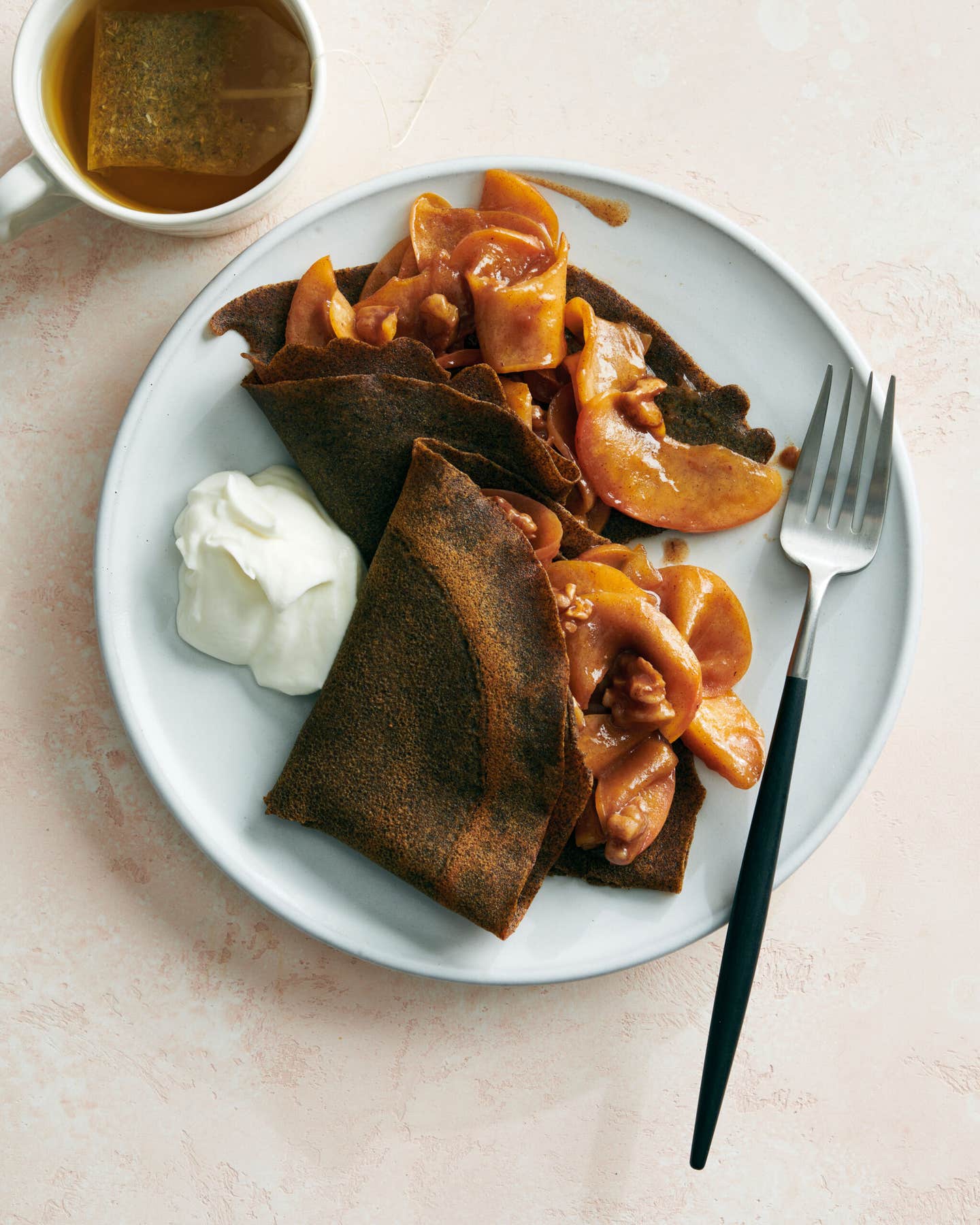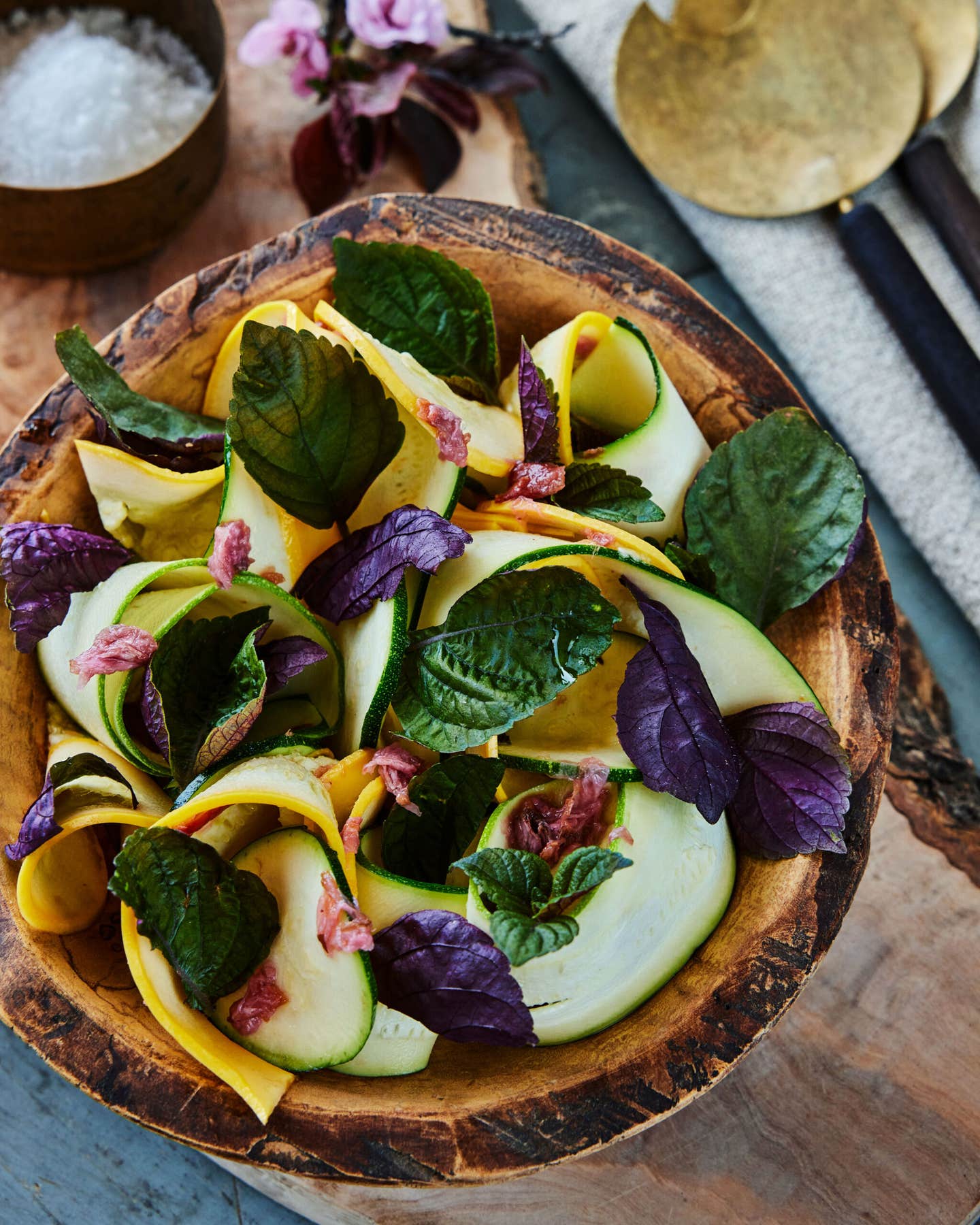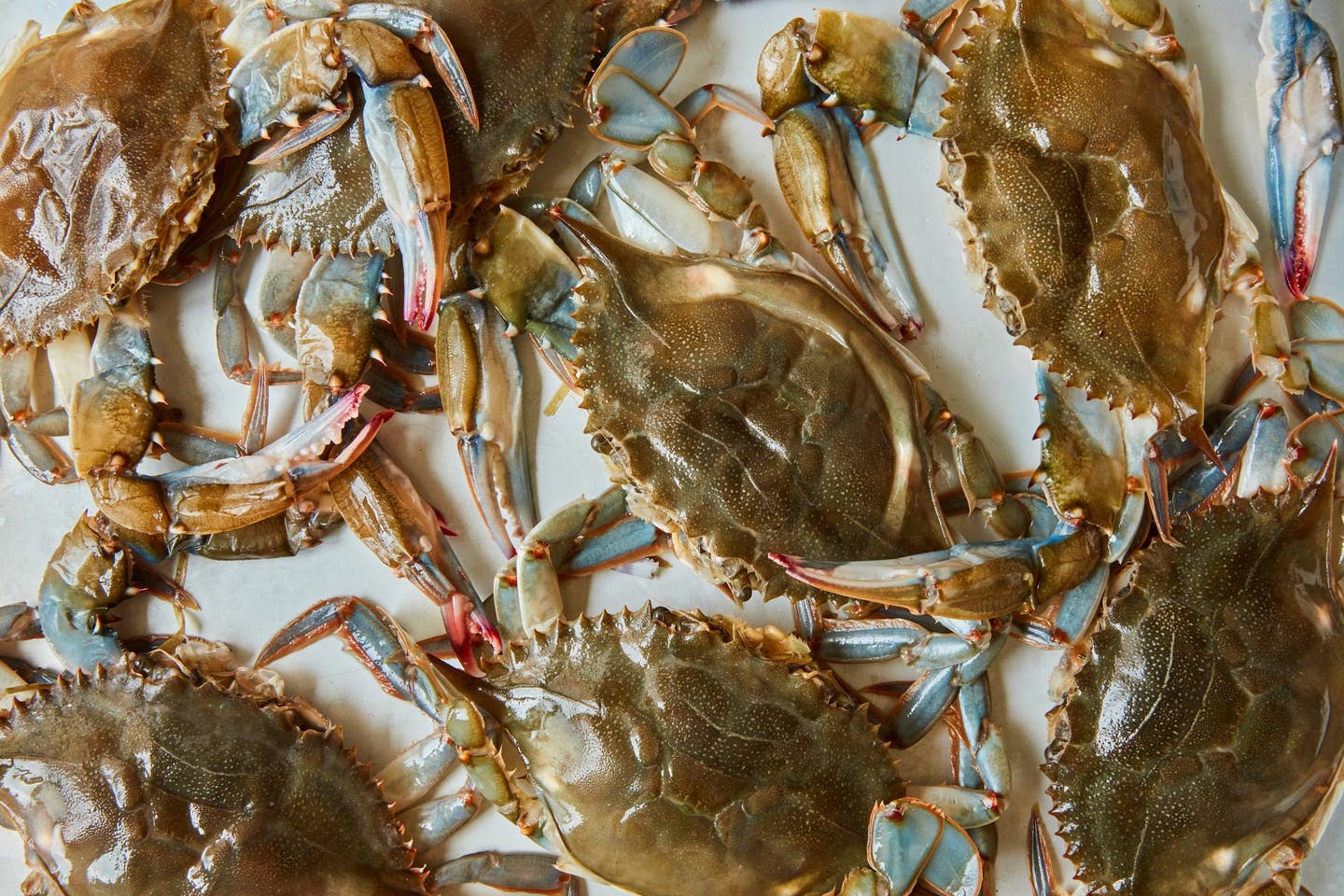
How to Clean a Soft Shell Crab
Frying the crispiest crustacean starts with a few simple steps that set you up for shellfish success.
The platonic ideal of seafood texture lives in the crispy golden crusts and tender, savory meat of soft-shell crabs. Amanda Cusey, the Executive Chef at Lake Charles's The Villa Harlequin, always runs them as specials when she can get them. "They look like little spiders," the Queen of Louisiana Seafood (an official title) says, "But they're super cool and so good."
They also require much less work to prep than hard-shell crabs: The soft-shell crabs you find in the States are typically the same blue crabs people often eat, but which have recently molted their old shell, before the new one has hardened. Once you know how to clean a soft shell crab, you can prep them in the time it takes for the fryer oil to heat up.
What you need
Before You Begin
Buy your soft shell crabs live, as close to when you plan to cook them as possible. "Once they die, they go off really fast," Cusey explains. If you aren't prepping and cooking immediately, she recommends packing them on ice until you do.
STEP 1: Cut off the Face Using Culinary Shears.
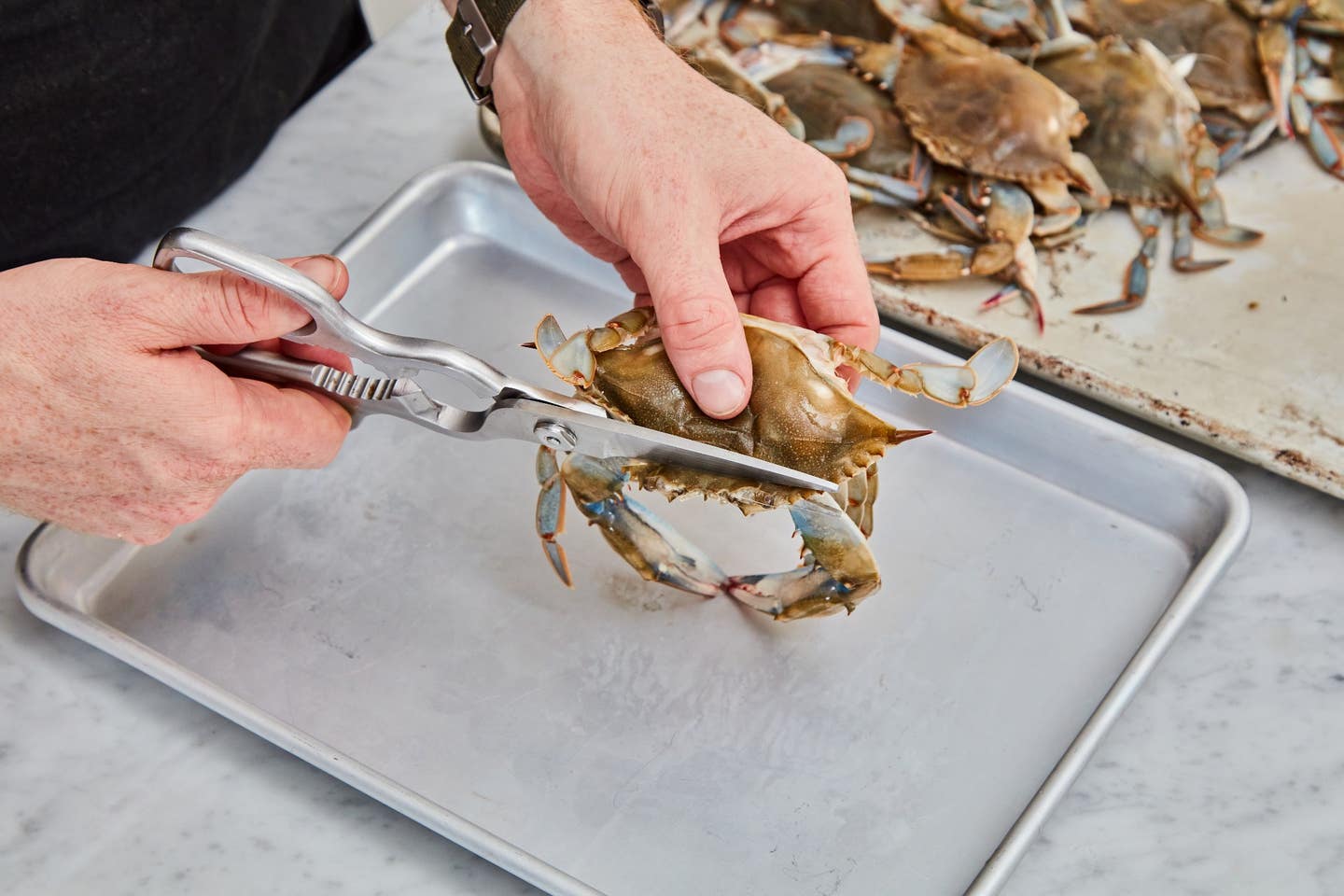
Place the crab on the board and hold it down with one hand, keeping the face pointing at your other hand. Using your culinary shears, cut off the front-most part of the crab, starting just behind any of the facial features. This kills the crab instantly, and gets rid of the beak. It's not harmful, Cusey explains, it's just the only part of the crab that won't soften when fried, which leaves a weird texture.
STEP 2: Remove the Lungs From Under the Back Shell.
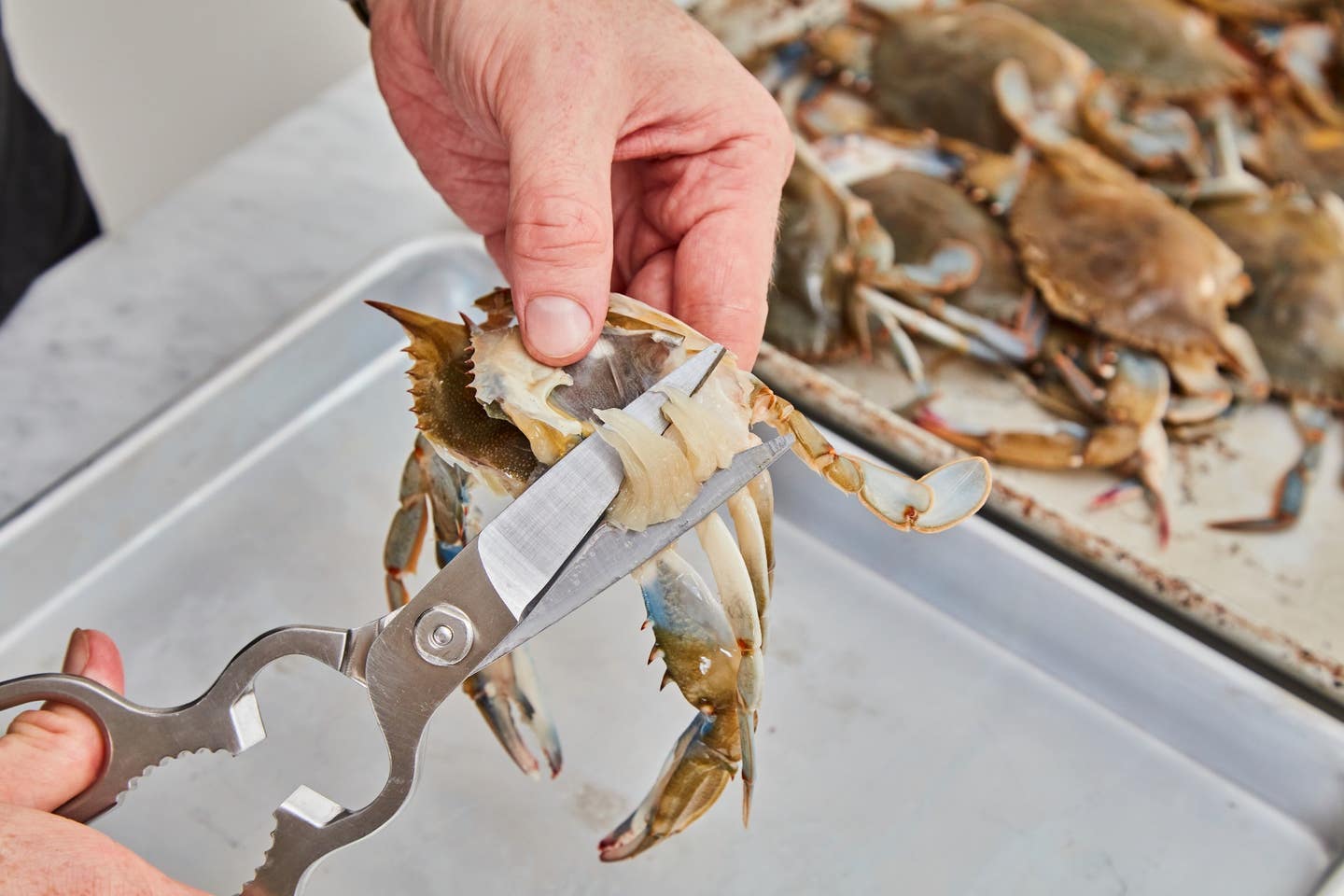
Using your hands, lift up the back of the crab’s top shell. The lungs are the spiky-shaped and off-white pieces with a visibly stringy texture. Once you find them, they should be easy to grab and pull or snip right out. The lungs won't make you sick or anything, Causey advises, but they just are not pleasant to eat, in flavor or feel. The orange glob nearby, on the other hand, is fat, and she recommends leaving that.
STEP 3: Get Your Crab Ready to Cook.
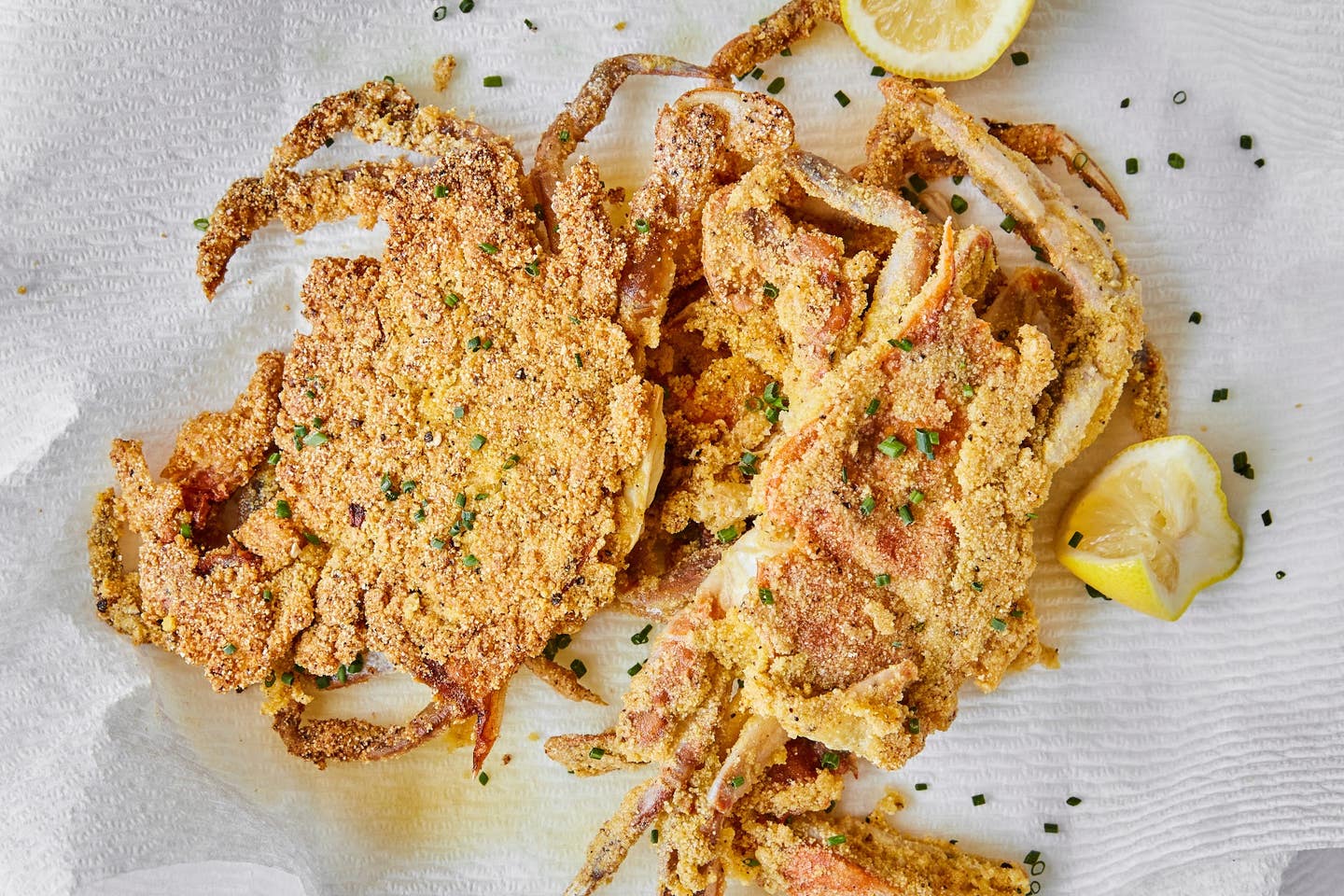
While some people also remove the “apron”—the triangular flap on the underside of the crab—Causey doesn't bother. But she does advise lifting the apron up when preparing the crab, allowing the batter to get all around and underneath it. She likes to dip her soft shell crabs in well-spiced flour, then buttermilk, then back in the flour again before frying, but she says eggs or milk work for the wet portion as well—the key is to make sure the dry mixture is well seasoned. While frying is common, soft-shell crab can also be deep-fried or sauteed without battering or breading the crab.
Final Thoughts
Frying soft shell crabs delivers one of the world's best bites of seafood, but before you batter and splatter them, you need to properly clean your critters. This pared down process of essential steps for how to clean a soft shell crab takes your crustaceans from alive-and-kicking to shatteringly crisp as efficiently as possible.
Keep Reading
Continue to Next Story
